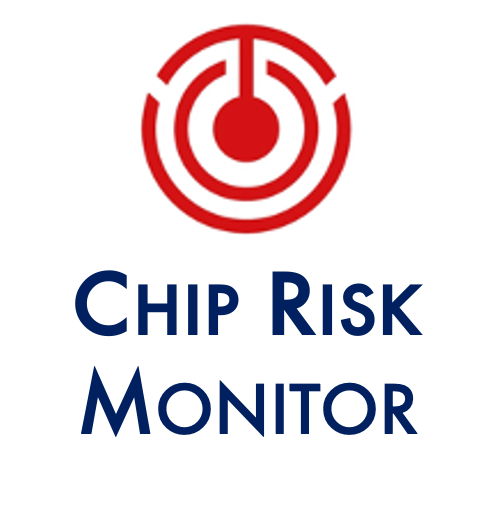Chip Risk Monitor
China’s semiconductor ecosystem is vast, and Beijing seeks to influence each node of the semiconductor supply chain. That pursuit is reflected in champions all along the path from raw materials to printed circuit boards to fabs to packaging and testing of microelectronics.
The Chip Risk Monitor surveys a set of key players from this ecosystem with the intent of capturing representative trends in China’s semiconductor sector while highlighting the most severe risks presented by China’s approach to supply chain dominance. The initial set of monitored companies includes:
AVIC Military Semiconductor (AVIC)
ChangXin Memory Technologies (CXMT)
Huawei
Semiconductor Manufacturing International Corporation (SMIC)
Shanghai Microelectronics (SMEE)
Yangtze Memory Technologies Corp (YMTC)
These companies are all among China’s top 100 semiconductor players and are all backed by the Chinese state in a variety of ways. They represent key nodes for the manufacture of a variety of downstream products that range from telecommunications and networking gear to mobile phones; from autonomous cars to missiles. They also reflect the variety of ways in which China’s semiconductor ecosystem can pose risks to foreign markets.
Risk Level Scoring Methodology
Semiconductors have become a center of gravity in U.S.-China technological and geopolitical competition. The United States government has positioned to step in to support American and allied semiconductor manufacturers. The CHIPS Act is a prime example of the increased political will that exists in Washington, DC to lead in the tech contest with China. The expansion of technology export restrictions sends a similar signal on the defensive side: The Beltway understands that American technology has supported the advance of China’s semiconductor ecosystem and that U.S. regulatory action can have a role to play in keeping America ahead. The Beltway also understands that dependence on China and Chinese inputs threaten American economic and national security.
But the success of those efforts depends on the details of follow through. And the PRC is not standing still. China has responded in kind with restrictions on the export of key semiconductor materials, like gallium and germanium. China has also bolstered state support for key Chinese semiconductor champions. And China has kicked into gear its system for circumventing U.S. restrictions through obfuscation, leverage over the U.S. ecosystem, and leverage over the international ecosystem.
As this competition rages on – within the context of even broader geopolitical struggle between the U.S. and China – the risks for U.S. private sector players and technologies with exposure to Chinese partners, suppliers, or customers only increase. The challenge for U.S. regulators also increases: China’s champions are hard at work evading U.S. enforcement of technology export restrictions and attempting to complicate efforts to impose equipment and capital restrictions on the Chinese ecosystem.
The Chip Risk Monitor looks to assess those risks in a recurring and transparent fashion. Two factors of risk associated with China’s semiconductor champions are reviewed:
One is objective risk. What are the features of a given Chinese semiconductor firm’s business profile that indicate how likely they are to pose a threat to compliance with existing norms and regulations? How do those change over time and reveal leading indicators of risk related to a company’s alignment with and support of Chinese political, military, and surveillance developments? These direct risk factors are assessed in two separate variables:
Proximity to China’s industrial policy ecosystem
Ties to China’s military and surveillance ecosystems
The second factor is the probability that non-China supply chains, and capital flows are exposed to the direct risks presented by proximity to China’s industrial policy system and to China’s military and surveillance efforts. This is referred to as contamination risk. Are reviewed Chinese champions increasingly accessing global capital markets to support their efforts? Are they expanding to new geographic or functional markets? Have their semiconductor outputs found new and growing use cases? The probability factor is assessed based on two separate variables:
Financial performance
Global profile
For both pairs of variables, equal weighting produces a factor score and

